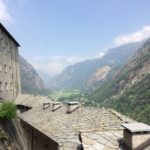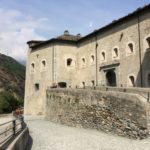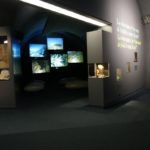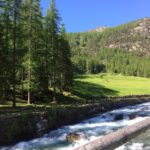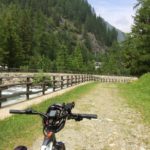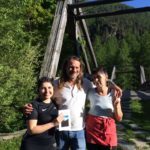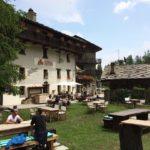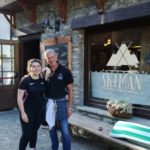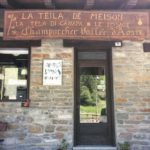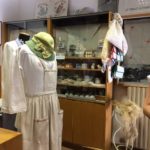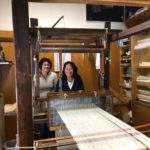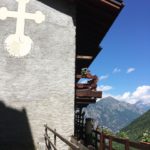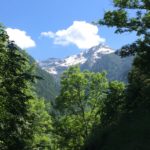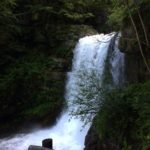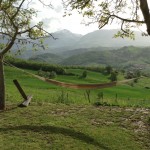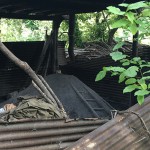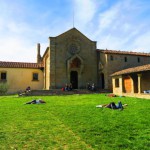July 1st: music, bread & food, wine, nature and amazing people!
Taking a walk through Champorcher’s mountains
A little known side of Aosta Valley you will fell in love with
In my weekend in Champorcher, I had the chance to find myself in a part of Aosta Valley that is rarely known by tourists and whose nature astonished me. A wonderful place to stay: a weekend was not enough!
These Mountains’ Spirit
Champorcher and its many small localities have a heart of their own. There are plenty of sports activities to do, if that’s your choice. It is a valley reachable on foot, because it’s situated at the beginning of the path of the Alta Via number 2, a famous trekking itinerary in the region. Its rivers guide your path, whether you’re moving by bike or hiking.
It is also a good place to go if you want to relax without too many distractions. Above all, it’s a valley in which you can choose to go alone, because it’s certain that you will find human connections along the way, especially if you let a local guide you. The people who live here really care about the valley, and that’s something I was struck by. It was nice to find a situation in which I could pick whether to be by myself in nature or to seek the company of others.
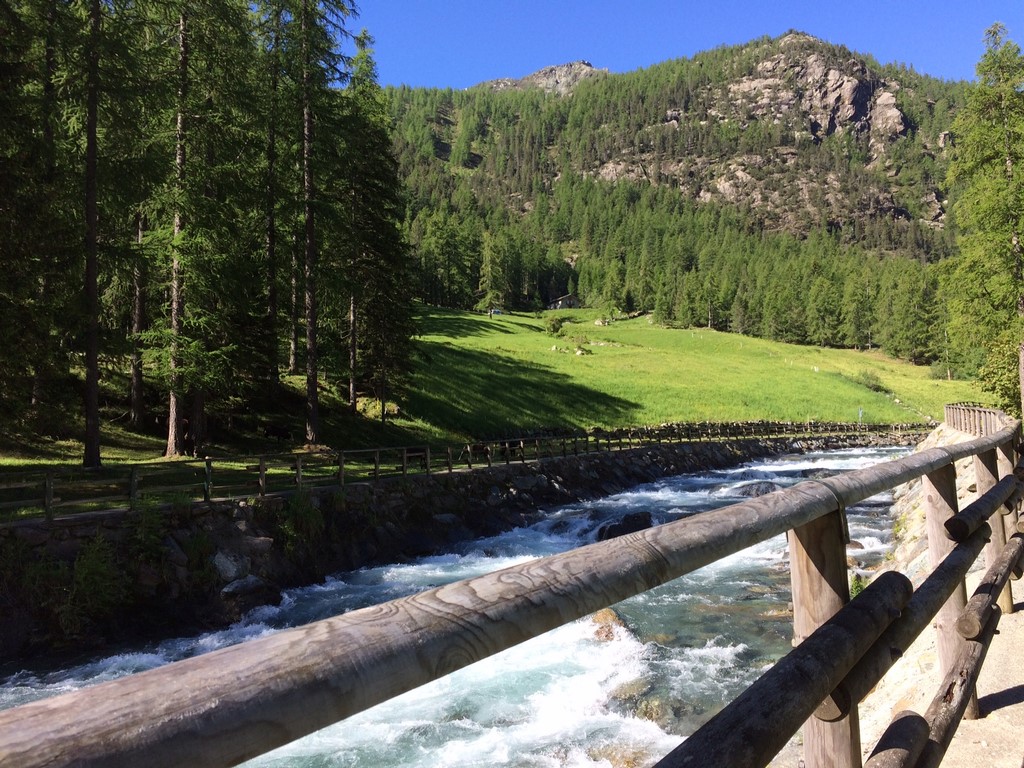
Trail from Chardonnay to Le Foyer du Fond
But here, other than the mountain’s life, you can also find events, concerts, museums and other activities, as I will tell you later on. It’s a place in which the Alps’ tradition is kept with effort and love, but in which it’s manageable
to always aim at something new. While I was in the valley, I could always hear the sound of a waterfall or a river.
«Champorcher must remain like this.» – Daniele said to me, once (Daniele is one of the people who helped me move around Champorcher) – «This is what keeps it different from the surrounding areas.»
Fort Bard
The first thing I recommend you to do is to go to Fort Bard, an amazing structure which is situated at the centre of the valley, over an cliff. You can arrive here using the train to Hone Bard, which it’s at 600 meters from the fort. If you prefer avoiding walking up to the hill, you can take the panoramic elevators to go up to the fort – they are four and they are free. The area is completely accessible to people with disabilities. For the folks who enjoy cycling or hiking instead, there are two streets: the panoramic one and the internal one.
Fort Bard is situated over a cliff at the beginning of Aosta Valley and watches directly the entrance to Aosta Valley. Nowadays, the stronghold is a cultural and touristic pole of convergence; it hosts museums, international expositions, events and info services. The Fort of Bard is a majestic militar structure which was built in the first half of the XIX century. It has played an important part in the Italian and French history. For its strategic position, Bard is a naturally fortified enclosure. Once on that same cliff was positioned a defensive structure in Roman times, which during the Medieval period became a castle, which then was controlled by the famous Savoy family from 1242 on.
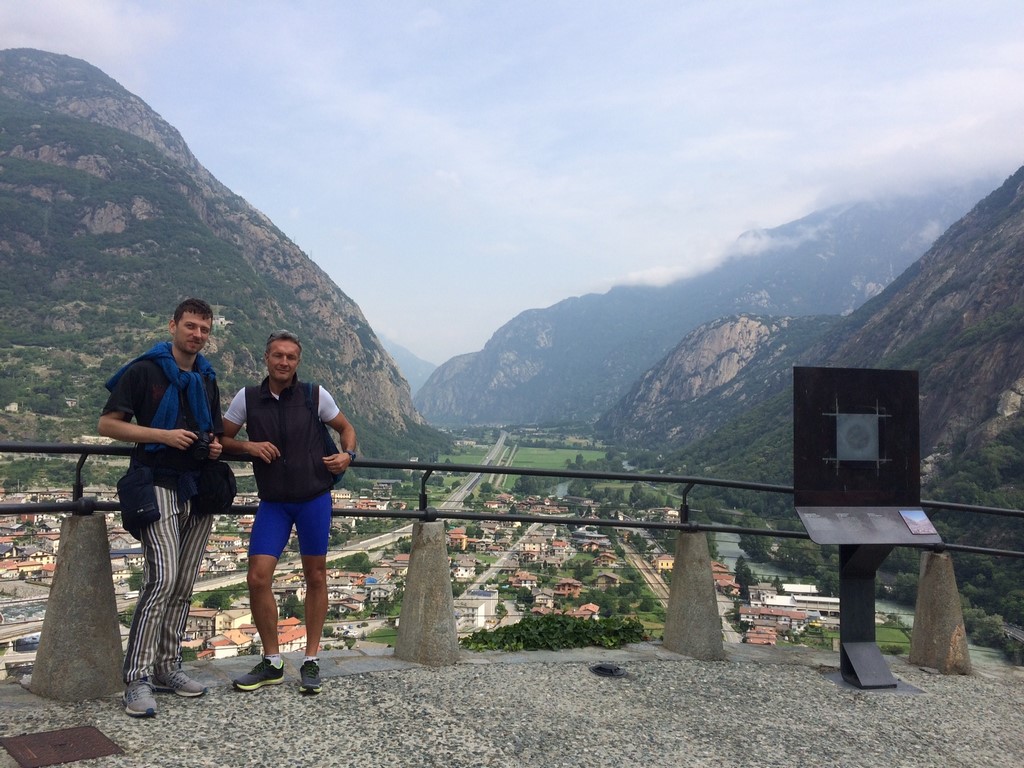
Fort Bard, view point
In 1800, Napoleon and his troops had to pass through the castle in order to access to the peninsula for the Second Campaign of Italy. After Napoleon got down from San Bernardo’s passage – known by pilgrims but not by the army – he found himself in front of the Castle of Bard. Outside the castle, there was Napoleon’s whole army. Inside it, only a small number of Austrian soldiers. The siege lasted two whole weeks! It costed Napoleon a lot of time and men – around 1500 soldiers, versus the only 13 Austrian losses. After he won, he ordered to tear down the castle. And that’s why the actual fortress is recent! What’s more is that the French writer Stendhal was there, in Napoleon’s Reserve Army, and recorded his journey to the Great Saint Bernard and his ‘baptism of fire’ in his autobiography. The ‘impregnable fortress’ was built after Napoleon’s death in fear of another attack from France, in 1830-8. Something that the Count of Cavour (1810-1861) – the first Prime Minister of Italy and a well-known statesmen who contributed to the Italian unification – saw directly, as he was ‘confined’ here from March 1831, during reconstruction works.
- Fort Bard, from the top
- Fort Bard
- Alps Museum at Fort Bard
The fort is in perfect shape thanks to recent renovations, and it’s a perfect stop if you want to press pause on your mountain’s trekking for a while and visit an historical and touristic gem full of well thought museums. Having the chance to view from above the beauty of the valley and its river Dora Baltea it’s astounding, but more so to go inside the Fort to visit its many museums. The heart of the fort is its Museum of Alps, who I can not recommend enough. Then, there is the ‘Ferdinando’ (the Museum of Fortifications and Frontiers), The Children’s Alps Museum and the Prisons – you can guess by the name in which part of the fort this last museum is. I would advise you to also check in the website the temporary exhibitions. If you want to stay more in the area, in the fort you can find a bar, a bookshop and an hotel.
In the Museum of Alps, I found this quote: «The Alps risk having one of these two destinies: becoming their own museum in order to pay homage to tradition and nostalgia, or get turned into a playground for the pleasure of their own citizens. Their future is certainly linked to another way.» – As the tour guide that accompanied me was reading it to me, I saw how much she passionately agreed. As my journey continued, I experienced how this phrase is emblematic for what the people who inhabit the valley of Champorcher want, in terms of the kind of tourism they intend to attract and how they treat the valley’s landscapes.
Useful contacts
A great part of why I enjoyed my trip so much is due to the people who accompanied me, who I want to talk about for a bit, because I think they played a huge part in giving me insights on how to move in the area and because I’m sure they will be able to help you too to connect with the place. I think that seeking selfless human connections comes with traveling in the spirit of Italia Slow Tour: the more you travel green and slow, the more you connect with the people that you meet.
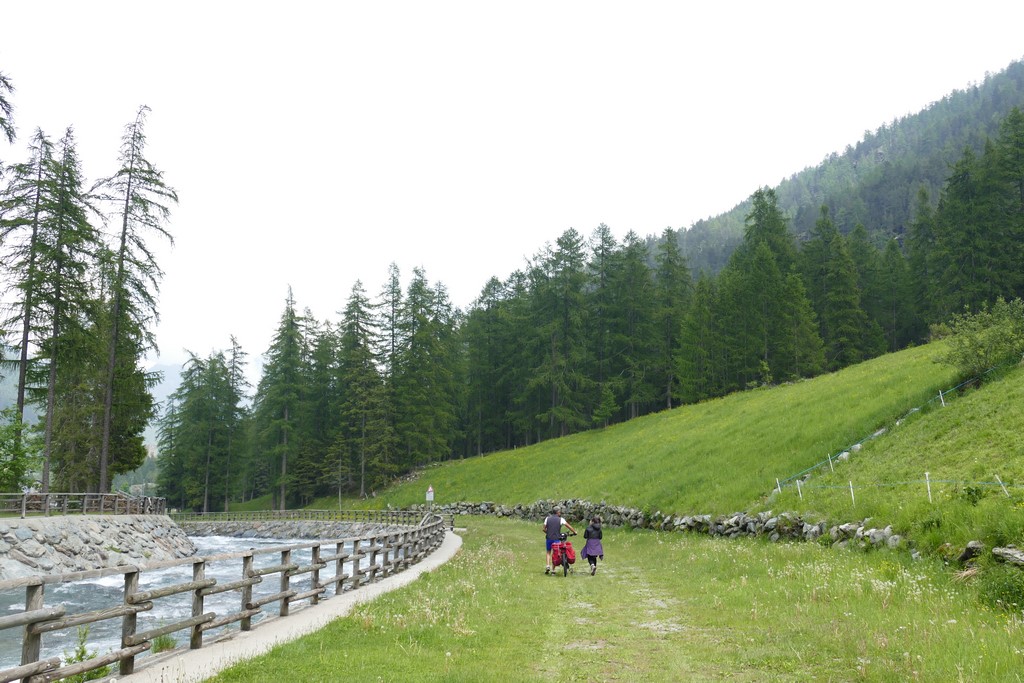
Trail from Chardonnay to Le Foyer du Fond
First of all, I personally recommend going to Giuliana of the Le Foyer du Fond to stop for find refreshment and ask for directions. Le Foyer du Fond is a inn situated in Vignat, at two minutes from Chardonnay, to which is linked by a beautiful path in the pine grove. She is enthusiastic about the valley and welcomes the locals and the tourists with an atmosphere of community and fun. If you want to have a really good time, I suggest you to go to her first thing, check if there is a concert in the programs of her restaurant and ask her what you should do next. The people and the places you will meet thanks to her insights will struck you.
- Water fall at Chardonnay
- Trail from Chardonnay to Le Foyer du Fond
- Trail through the pine wood from Charonnay – Le Foyer du Fond
The second person I suggest you to meet before you go is Massimo, who owns a family restaurant (Lo Skiman Gontier) and an hotel (Maison Nicole) just after the pine woods, in Chardonnay. The food at Lo Skiman Gontier is particularly good and he’s a gentle and welcoming person, who decided to pair up with Giuliana in order to let me stay a few days and help me in my trip. There is a third person who walked with me through the trip: Daniele, who found in using a bicycle to move every day a way to change the way he perceives the world around him. He lives in Aosta but his father was from Champorcher, so he tried to reconnect with every person we met (which was pretty fun to watch; we started talking to so many people). He’s currently working on encouraging the public local administrations to be interested into the concept of «sweet mobility», making them incentivizing the citizens to choose to move by bike instead than by car.
- Zoe, Giuliana and Enrico
- Massimo’s Restaurant at Chardonney – Skiman Gontier
- Massimo – Lo Skiman Gontier – and Zoe
Last but not least, I recommend make contact with Andrea Jory, if you find yourself in Pontboset, especially if you’re going up to Crest de Sous. He runs the hostel Cresta del Lupo and knows a lot of beautiful places to go trekking to in the area.
The Ecomuseum of Chardonnay
Right to the left of the restaurant «Lo Skiman Gontier», you find a traditional shop of hemp products called «La Teila de Meison», which translated is «the cloth of hemp». It is open every day except on Mondays, and it closes only in November. When I came in, there were two women at work: Blesylia and Silvana, two of the members of the cooperative «Lou Dzeut», an association that was founded in 1989 by a group of women of Chardonnay in order to continue the hemp’s handicraft and to give a job to young women of the area.
Their name in the local patois has two meanings: swarm of bees (to indicate the work that is made in group and collaboration) and sprout (as a promise for future fruits). Blesylia and Silvana told me that neither of them were actually born in Champorcher: Blesylia is from a city near Manila (Philippines) and Silvana is from Genova (Italy). During this trip, I found myself in the company of people who care a lot about this area without being from here multiple times. Maybe it’s the effect of the valley.
- Hemp shop by the group running the Eco Museum, at Chardonnay
- Hemp Shop
- Hemp Shop, Silvana and Blesy
Lou Dzeut continues to weave the hemps’ fabric, sewing and embroidering the trousseaus and products which are a part of the memory of Champorcher. Actually, the producing of hemp had an important place also in the history of Italy. Once, growing and working with hemp was very important in the peninsula. In the 1950s, Italy was the major producer of hemp in the world, alongside the URRS. Hemp furnishes a prestigious fibre, reinforces the land in which is cultured and has always been used to create cloth, ropes and even paper. The weaving of hemp was still very common at the beginning of the XX century, but afterwards it was almost abandoned.
The association also oversees the ecomuseum. When they asked me if I wanted to visit it, I felt like I was about to enter an old secret. As Blesylia continued to work at the loom, Silvana brought me to a traditional house just right in front of their shop and start talking about it in detail. The museum is free and has only two rooms, because the rest of the house still has to be renovated. The first is a barn, which has a custom-made loom that has 200 years old (!) – in Champorcher, every family had a loom in their barn. This was the warmest room in the house, thanks to the
presence of the animals. It was also the place in which the family would spend most of their time together. In the second room there is a kitchen, which has an oven that in the past would make bread for all Chardonnay once a year.
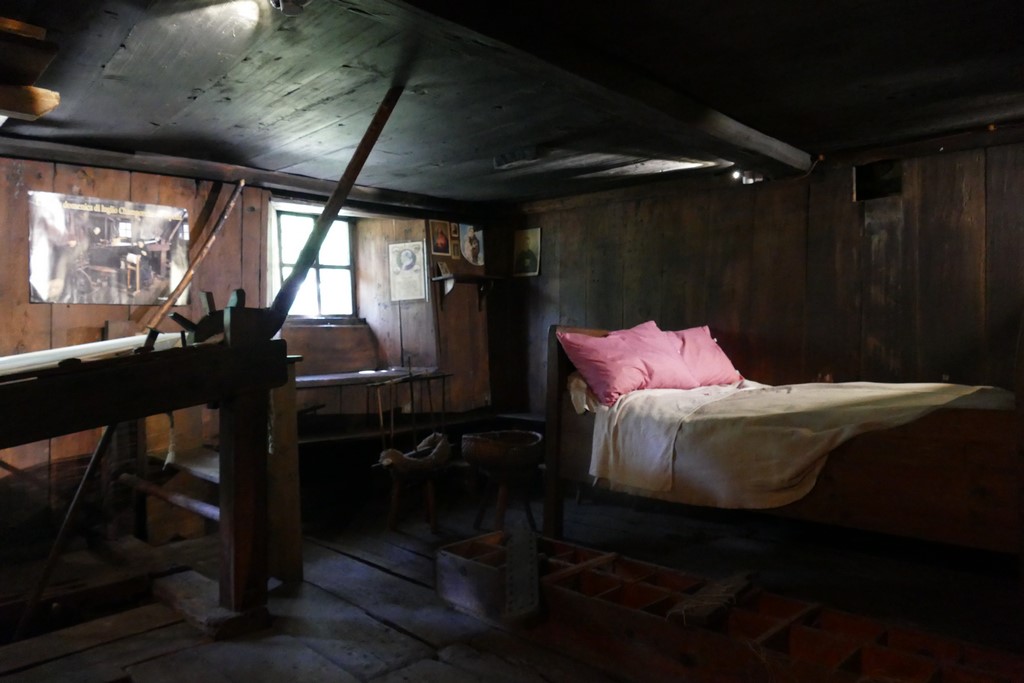
Inside the Eco Museum
The house of the ecomuseum was bought by the district in the 1990s and everything that there is inside has been donated by people of the community, which is quite impressive. Having only a weekend for my journey, I did not have the time to visit the lake Miseren, but if you find yourself in the area I would recommend it to you. The path that goes up the mountain begins from a path that you can find near the ecomuseum.
Pontboset and Crest de Sous
After I weaved Silvana and Blesylia goodbye, I decided to go down the valley to Pontboset, particularly in the direction of Crest de Sous, where I dined at the family restaurant and hostel La Louye Su La Goumba. I recommend you to not eat too much food in the valley of Champorcher, as it will both blow your mind and fill your stomach very quickly! It took me 4 hours to decide that my body was not able to eat more food. I’m sure that, no matter what I tell you now, a similar situation will happen to you too. When you do decide to stop eating, I suggest you to consider walking and trying to digest everything. And Crest de Sous is perfect for the job!
- Restaurant – hostel La Louye Su La Goumba, Crest de Sous entrance
- View walking from Crest de Sous to a small village
- Crest de Sous gorge
From the restaurant, you can take a path that will bring you directly to the peak of the hill. There, you will find a small village, which has people working on its restoration by day, and nobody at night. A renovated house has been dedicated to the pilgrims who are passing through the Alta Via number 2 – if you want, you can ask to sleep there.
After I got down again, I met Andrea by chance and he accompanied me through a beautiful path in the woods that led us to the ‘orrido’ of Ratus. What is an ‘orrido’? Well, it is a precipice. In this one, at the end of our hiking there was a powerful waterfall, through which old processions would pass to go to a sanctuary on the other side of the woods.
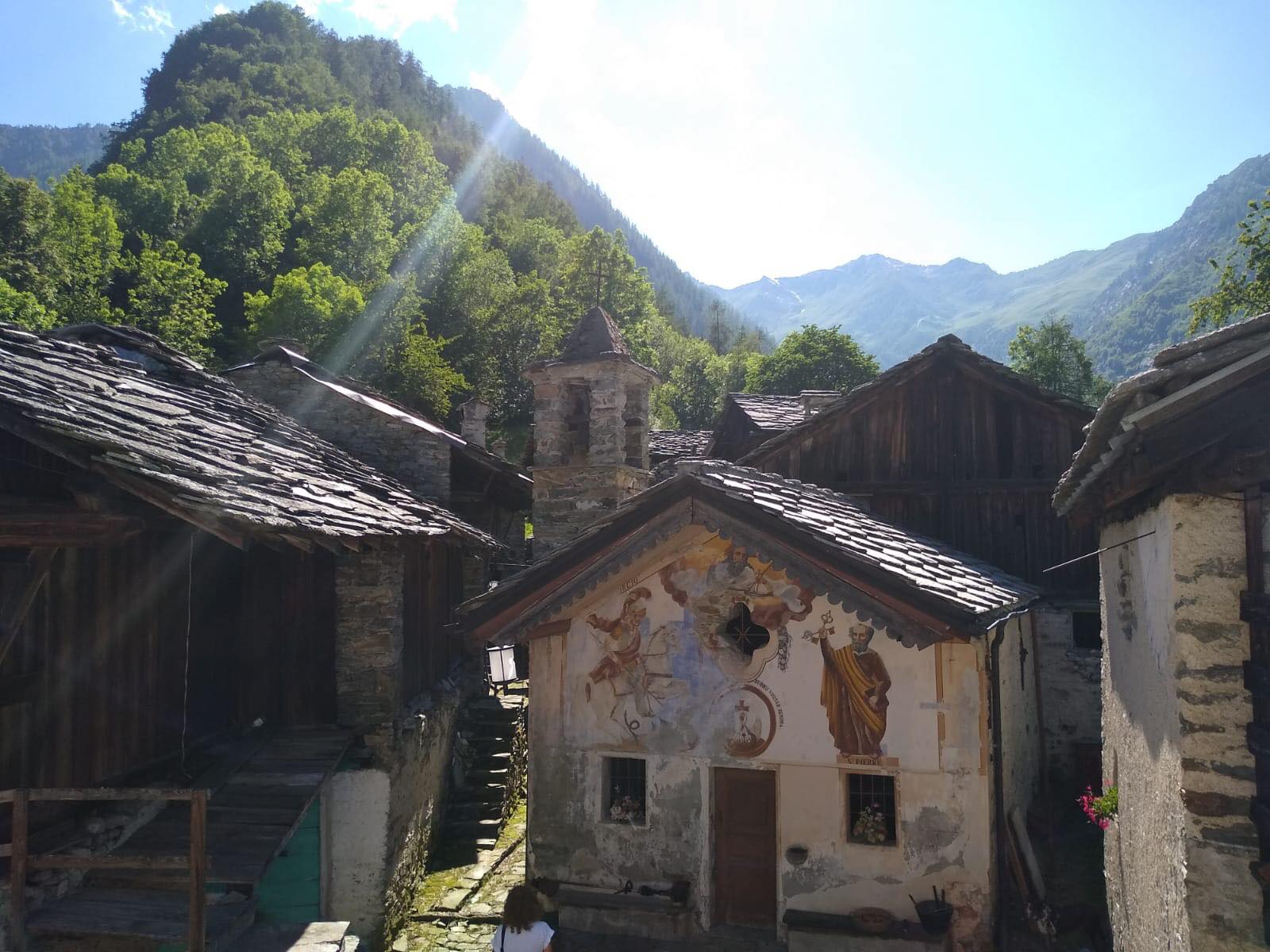
A small village on the way
As we saw the waterfall, we started laughing and shouting, expressing the energy that we were feeling, standing in front of it. A magical place!
Zoe Roversi Giusti

